Before Marvel UK’s “Genesis 1992” characters first spread their wings in their first US format books and weekly British comic Overkill, Editorial Director Paul Neary and I put together a promotional booklet promoting the characters, printed on the office photocopiers, but given ‘special’ cover by Liam Sharp and sold at the United Kingdom Comic Art Convention (UKCAC) in London, in September 1991, for just 10p.
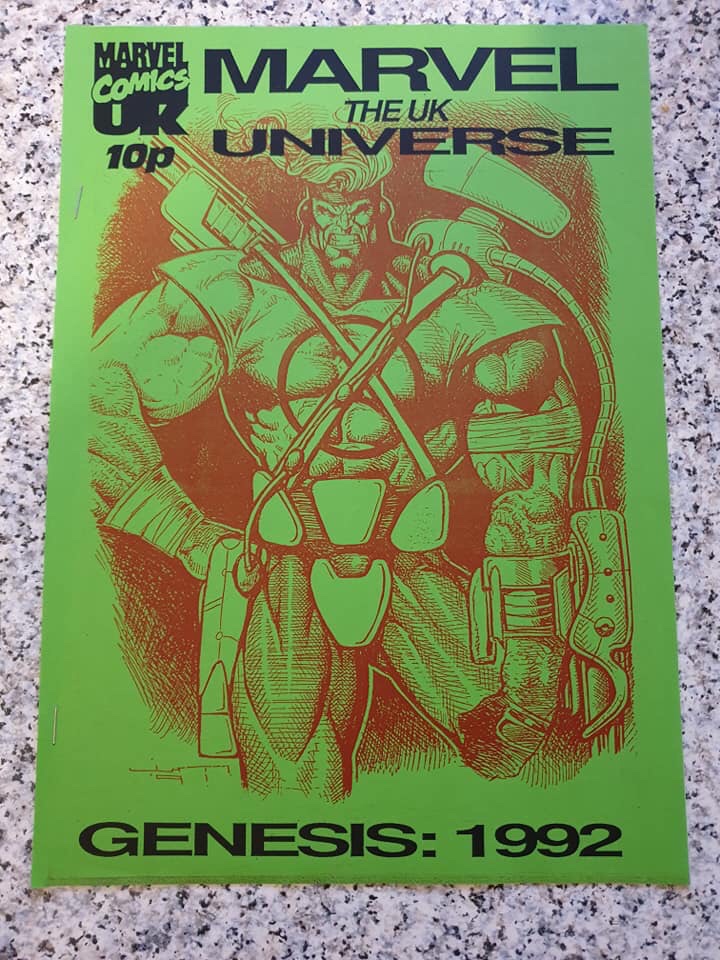
United Kingdom Comic Art Convention Marvel UK Booklet Cover courtesy Adrian Clarke of GetMyComics
The UKCAC promotion booklet features early sketches and ideas for “Genesis 92” and features art by Liam Sharp (drawing Death’s Head, Motormouth and Killpower, the latter two characters initially going on to be drawn for Motormouth comic by Gary Frank), Gary Erskine (Warheads), Dermot Power (Ram, later known as Digitek) and Hell’s Angel (Bryan Hitch).
While Liam Sharp provides most of the art featuring the character, one of the images both inside and on the back cover featuring Motormouth looks to me like it might be the work of her creator, Paul Neary. Artist Richard Whitaker, who was initially earmarked to work on the book, recalls a sketch by Paul he was shown that looked similar.
(Richard’s credits include two Doctor Who strips during my editorship, “A Glitch in Time” (initially called “Open Season”, written by me) for Doctor Who Magazine Issue 179, and “conflict of Interests” for DWM Issue 183, written by Dan Abnett).
Apart from some smashing art by some now well-established and much admired comic artists, the booklet is notable for its use of RAM. As the original name for the cyber-tech character Digitek, the appearance of “Hell’s Angel” than aka Gabriella Daskalos – and mention of A.E.G.I.S., an early incarnation of the shadowy organisation with an evil agenda backed by an arcane deal with Mephistopheles, that was to become MYS-TECH in the published comics.
After her initial launch, “Hell’s Angel” became “Dark Angel” after a trademark challenge from the Hell’s Angels, which prompted Paul to trademark the initial Genesis 1992 characters, trademarks that persisted for many years after their last regular appearances. (We were allowed to trademark “Warheads” so long as we made no attempt to apply it to the name of a missile).
There is no mention for the second Knights of Pendragon series that formed part of the Genesis 1992 launch, perhaps on the advice of Marvel US to help build the brand using characters that had already been sold into the US comic store marketplace.
A.E.G.I.S ended up being used in a storyline for Dark Angel #6 (also published in Overkill #5) when she travelled back in time to prevent the summoning of Mephisto and therefore averting MYS-TECH’s creation. But a group called AEGIS took their place, so she had to set things back to established continuity, clearly a reference to these early concepts.
I have a later version of this booklet, included below, which I suspect was produced for creator reference and for circulation within Marvel UK. This booklet includes an outline for “Pendragon II“, utilising some of Gary Erskine’s art for the first Knights of Pendragon series.
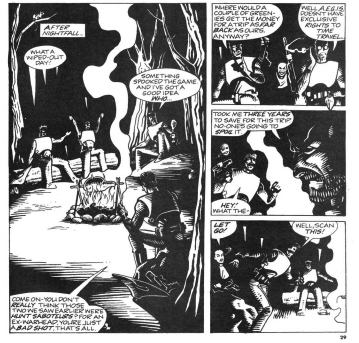
AEGIS is mentioned in the Doctor Who story “A Glitch in Time”, published in October 1991 just after UKCAC. Script by John Freeman, art by Richard Whitaker
A.E.G.I.S. was an early incarnation of MYS-TECH, and is referenced in the aforementioned Doctor Who comic story, “A Glitch in Time”, published in October 1991, although the dialogue suggests we kept the organisation’s modus operandi vague.
We’d used DWM before as a way to bring concepts into the Marvel universe ahead of their proper run, of course, Death’s Head’s appearance in DWM 135, “Crossroads in Time” being the most famous example.
Richard Starkings, who was strip editor at the time, was behind that, as a means to bring the original Death’s Head down to near human size.
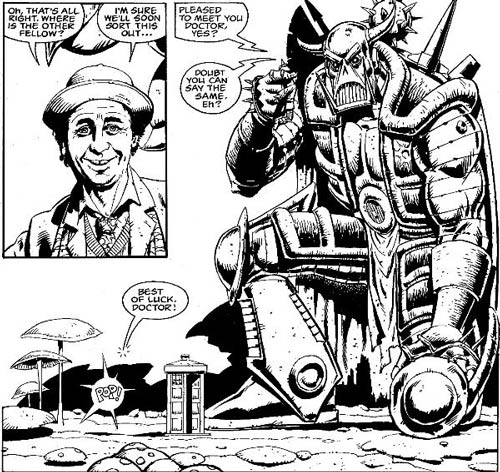
Crossroads of Time, published in Doctor Who Magazine Issue 135
The whole MYS-TECH universe went through a lot of development, Paul Neary working with a number of creators on concepts for it, including Warren Ellis and Paul Cornell, that were never, ultimately, progressed.
(Without the agreement of the creators mentioned it would be unfair to detail the content of these outlines as, unused, they remain their copyright).
Paul was always coming up with ideas, some inspired by real life. When pubs around Arundel House, Marvel UK’s base of operations in the late 1980s and early 90s, became plagued by tiny flies for example, he came up with the idea that these flies were in fact miniature recording device to map the Earth, to create the device finally seen in full in the four-issue MYSTECH Wars series written by Dan Annett and drawn by Bryan Hitch.
(It has to be said that Paul spent a fair amount of time in pubs to plan projects with creators, which made him a beggar to find when he’d forgotten a meeting or a visit by another creator, Mark Harrison being one I recall specifically… but what meetings they were. On the down side, it’s no wonder my memory of these times is sometimes sketchy…)
PAGES FROM THE 1991 UKCAC MARVEL UK BOOKLET
With thanks to Adrian Clarke of GetMyComics
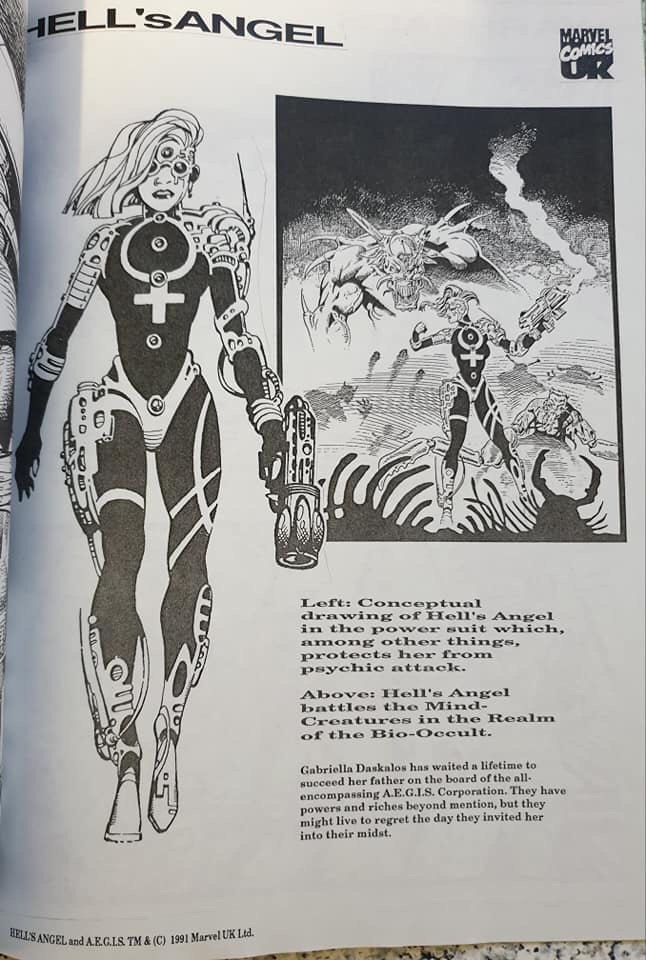
United Kingdom Comic Art Convention Marvel UK Booklet
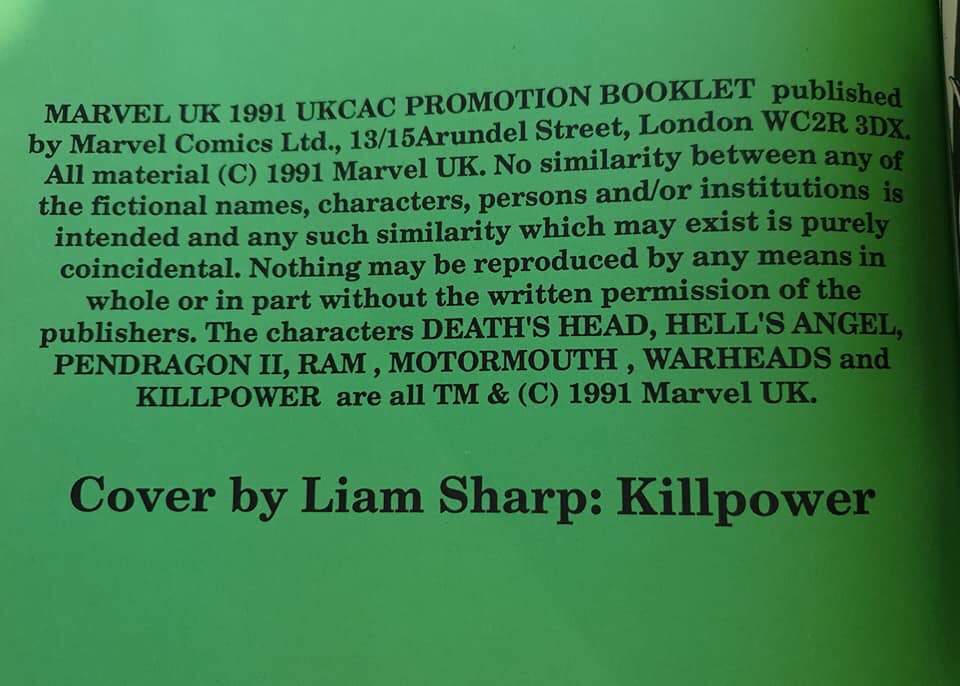
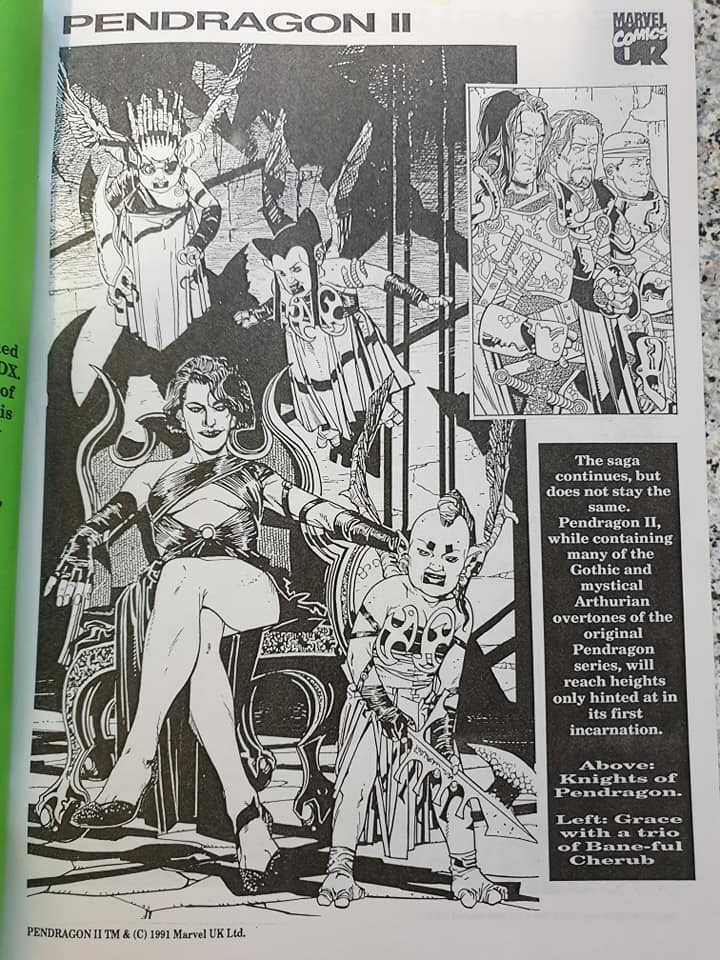
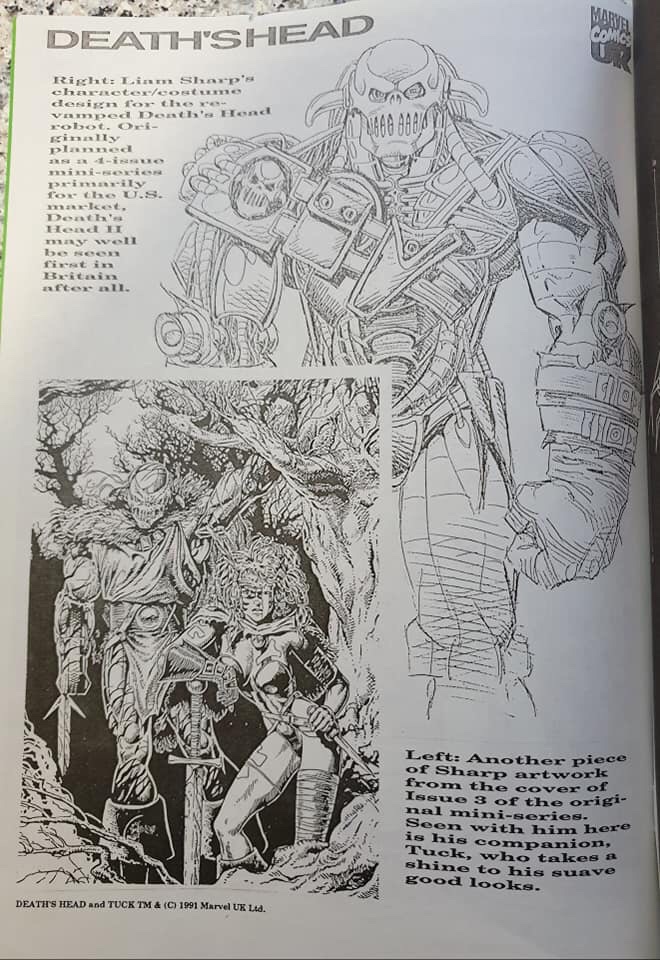
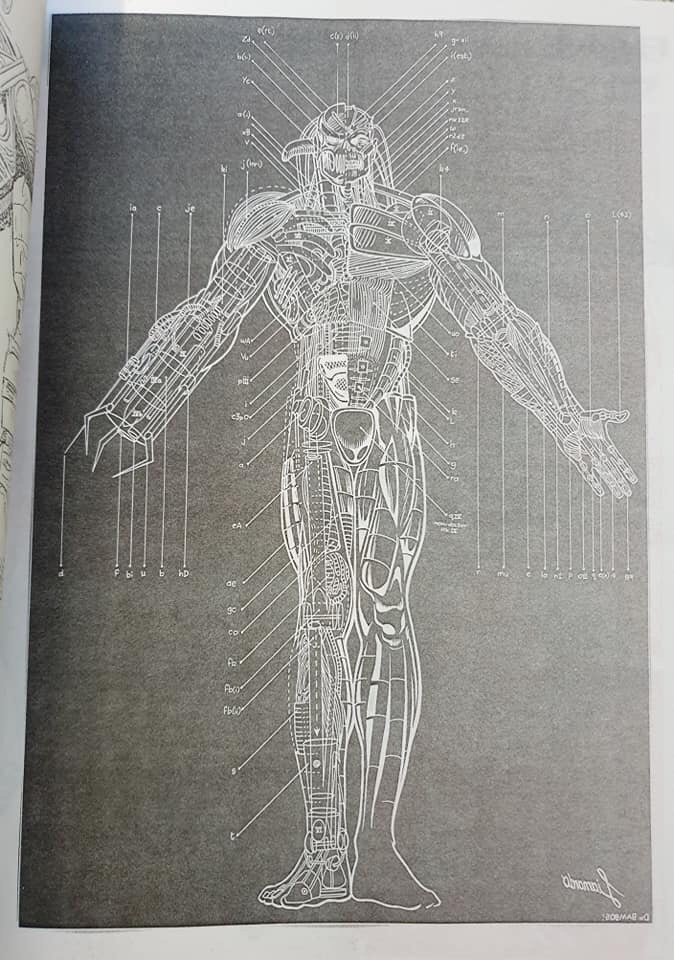
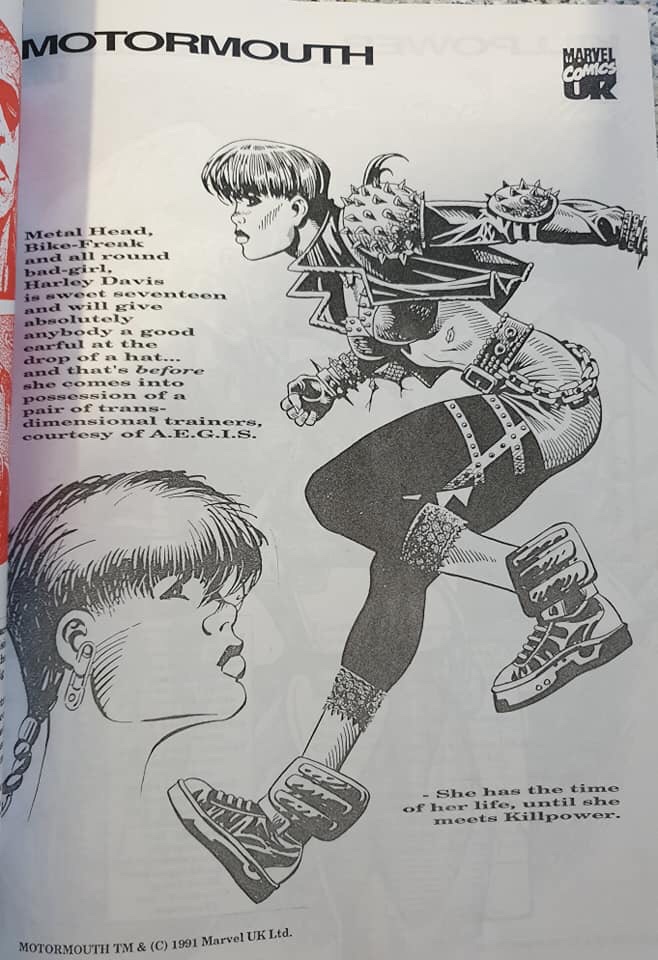

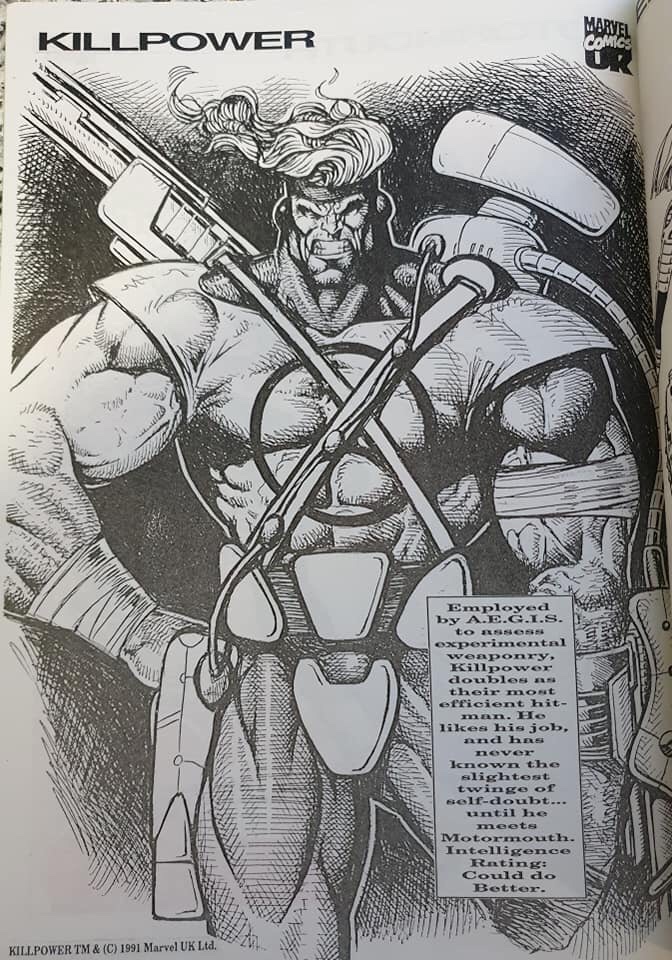
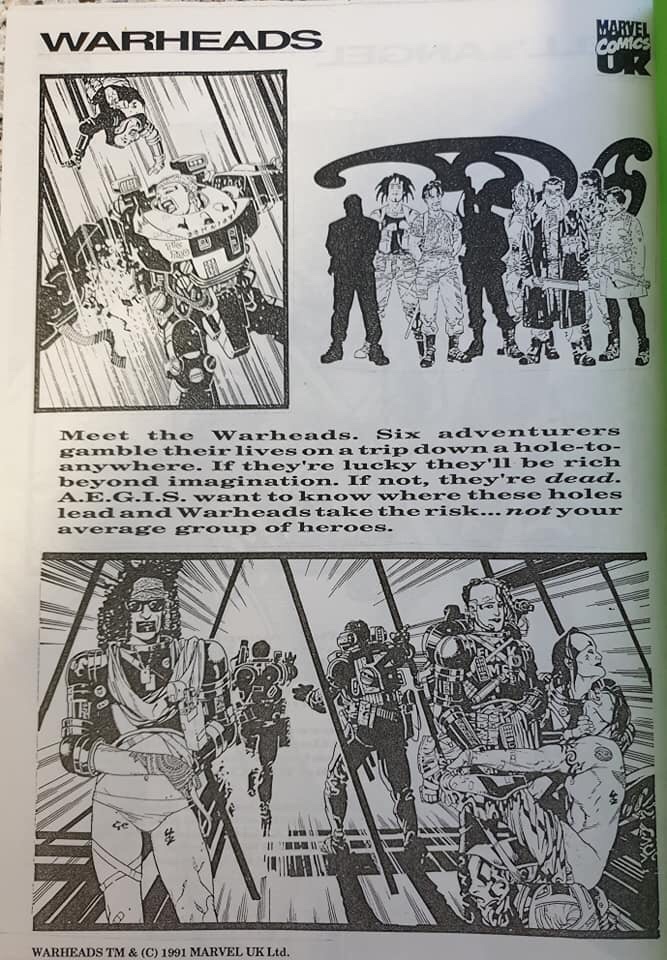
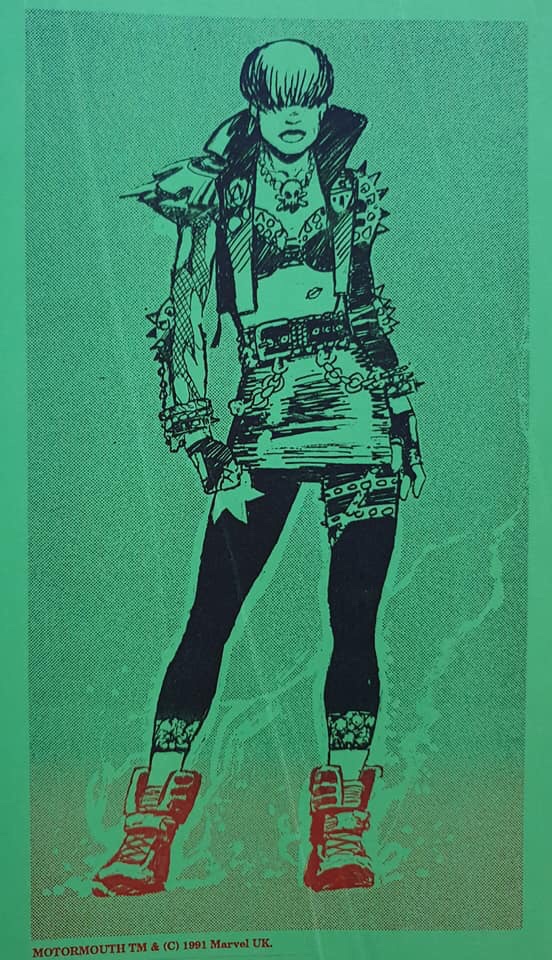
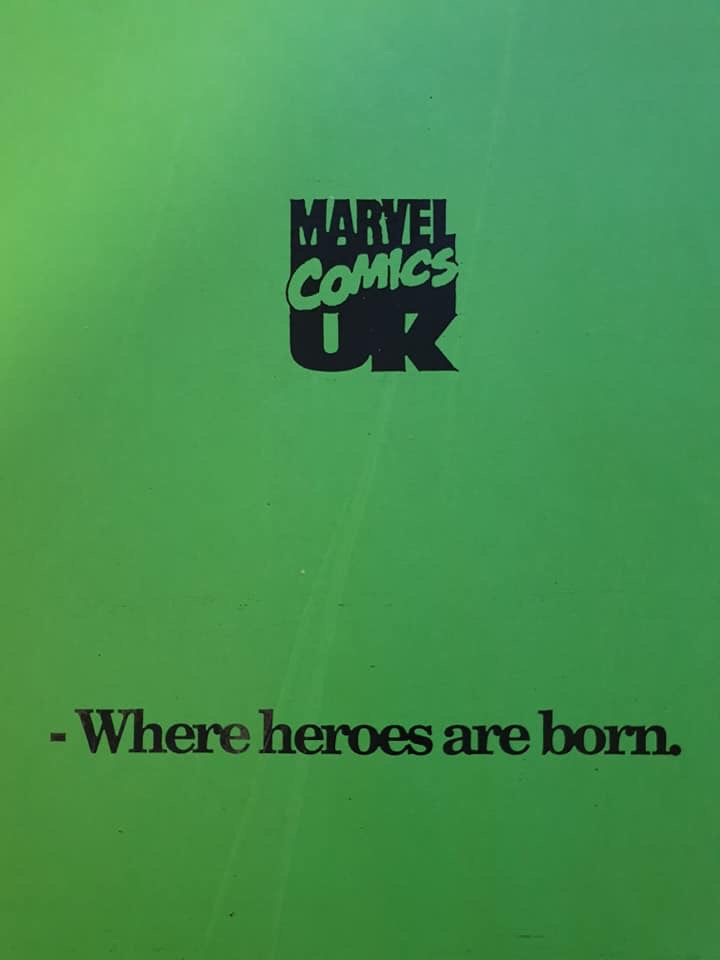
PAGES FROM THE 1991 GENESIS 1992 MARVEL UK BOOKLET
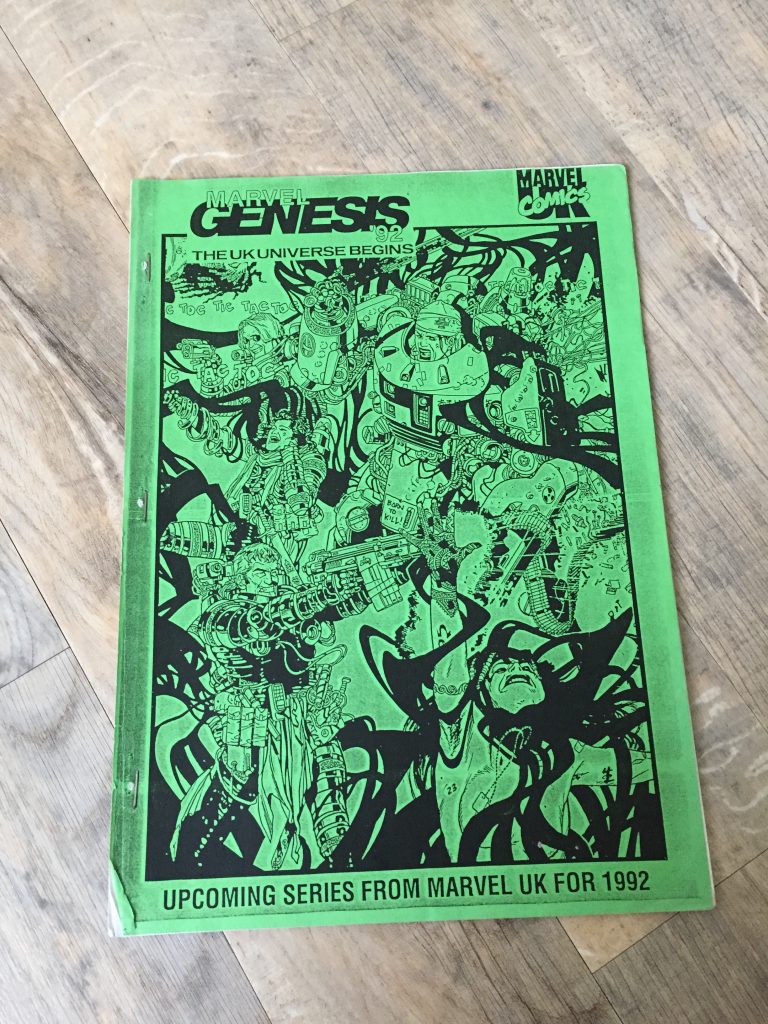
The cover of a later “Marvel UK Genesis” Booklet, in which MYS-TECH replaces AEGIS
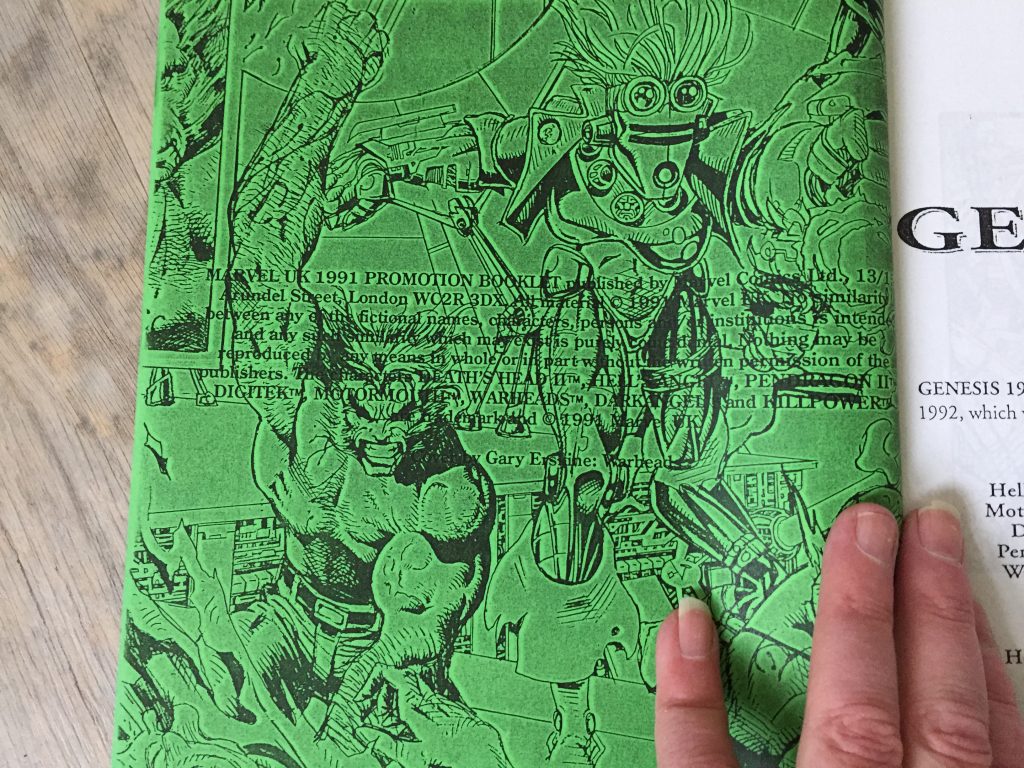
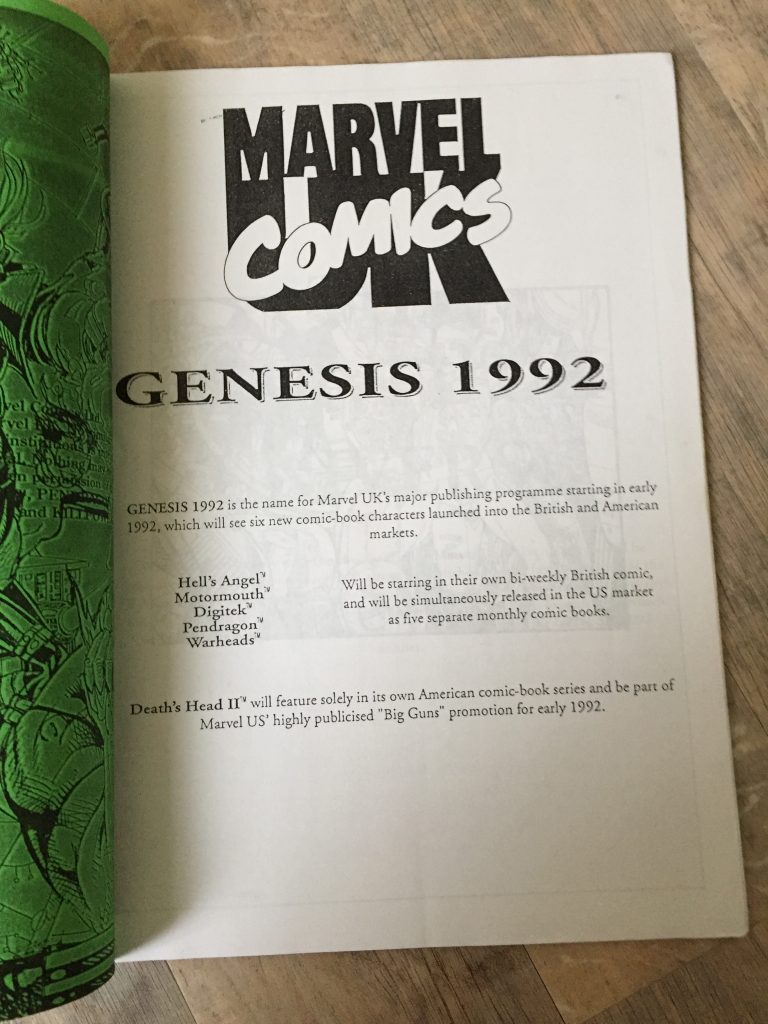
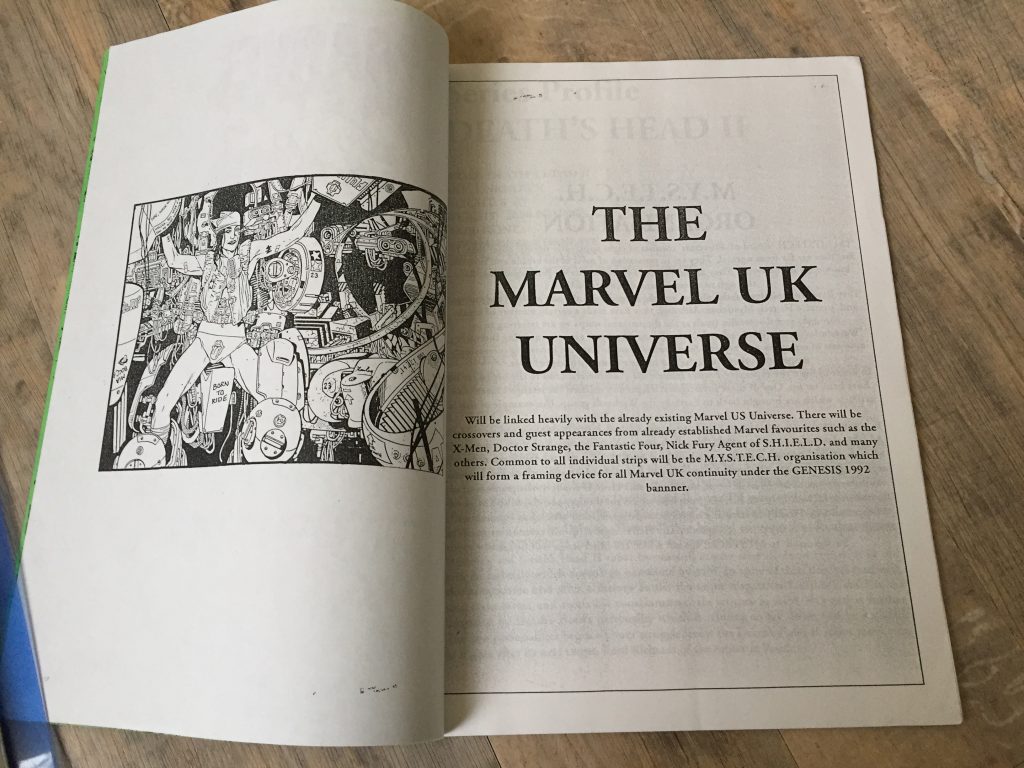
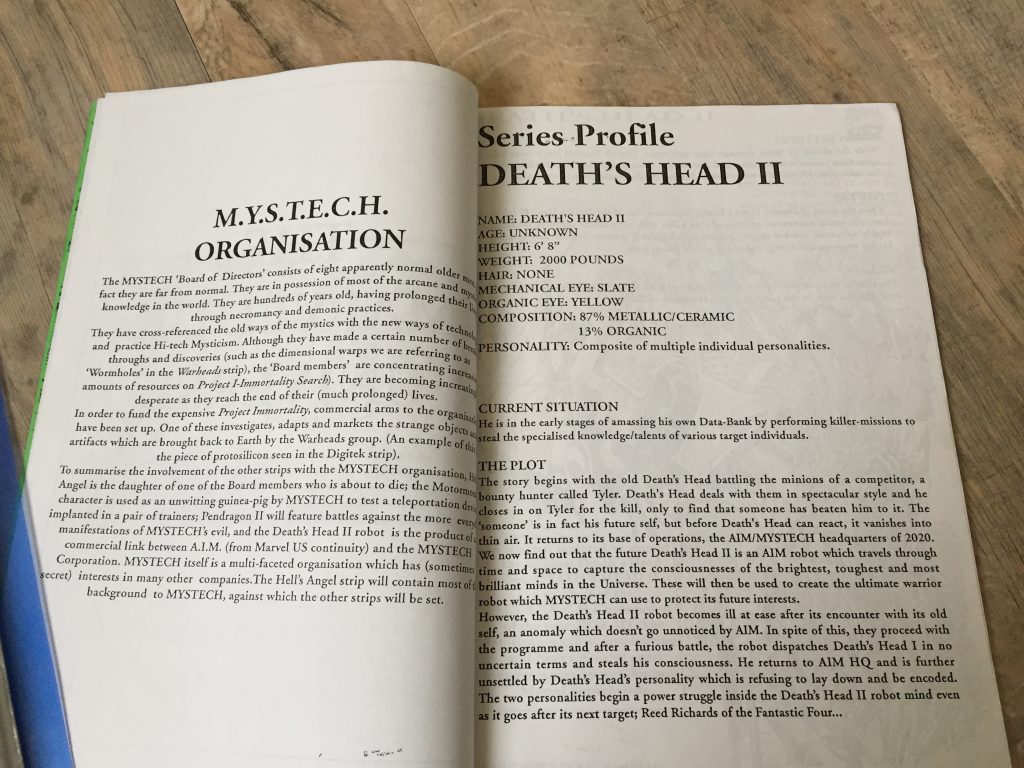
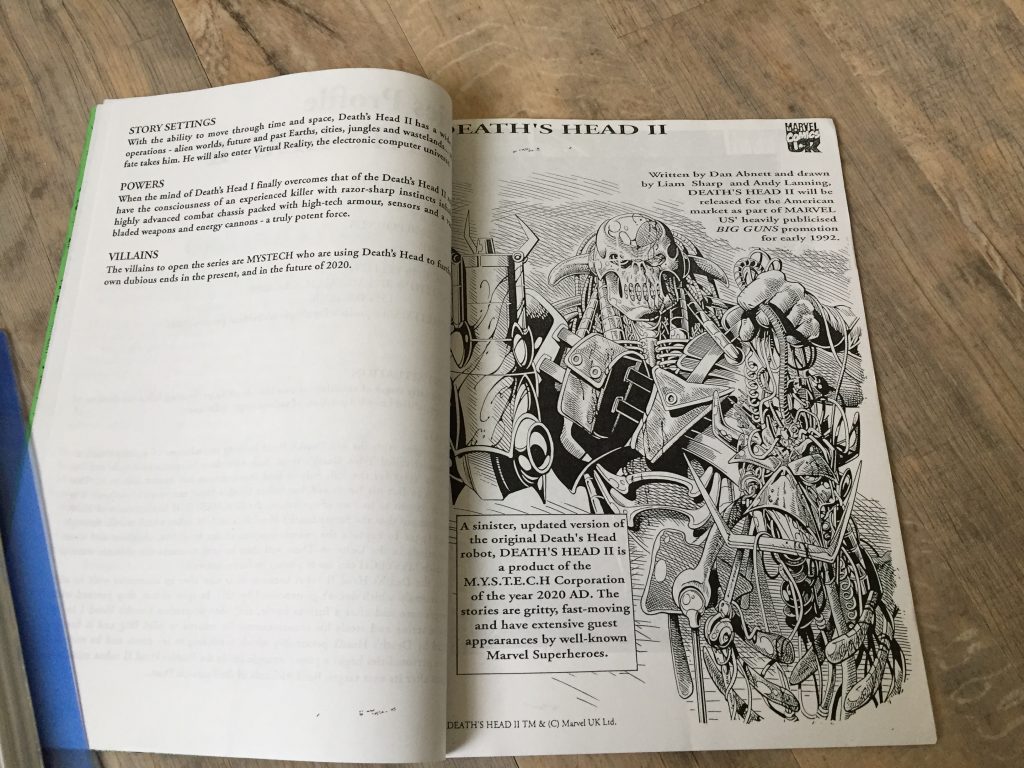
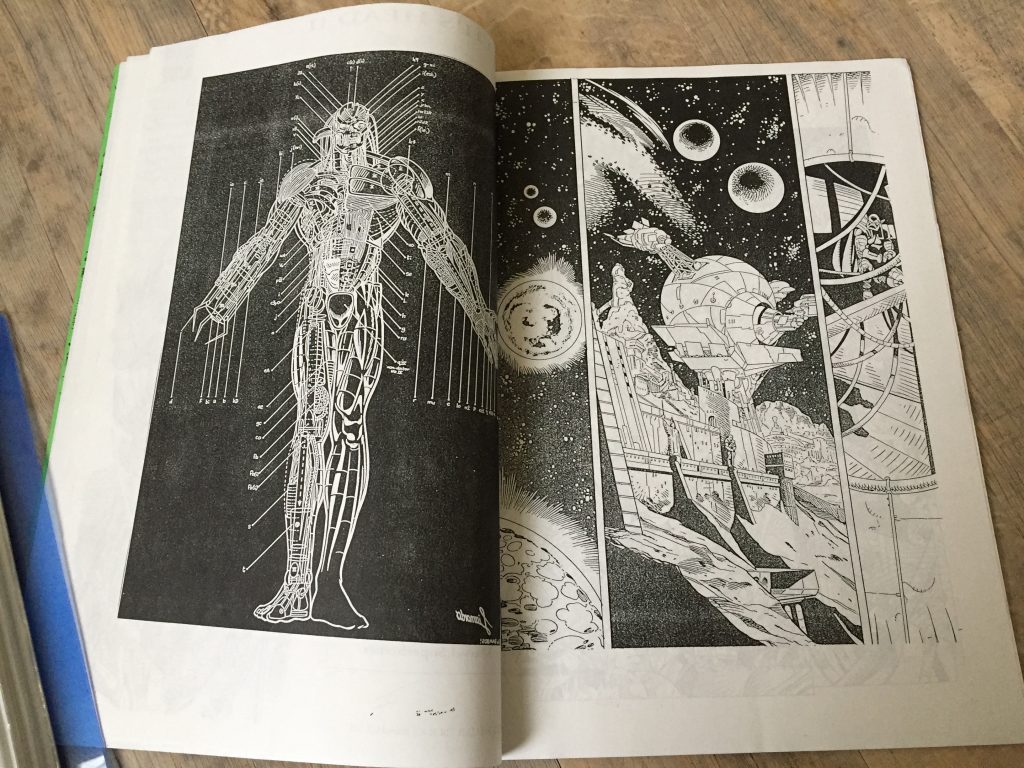
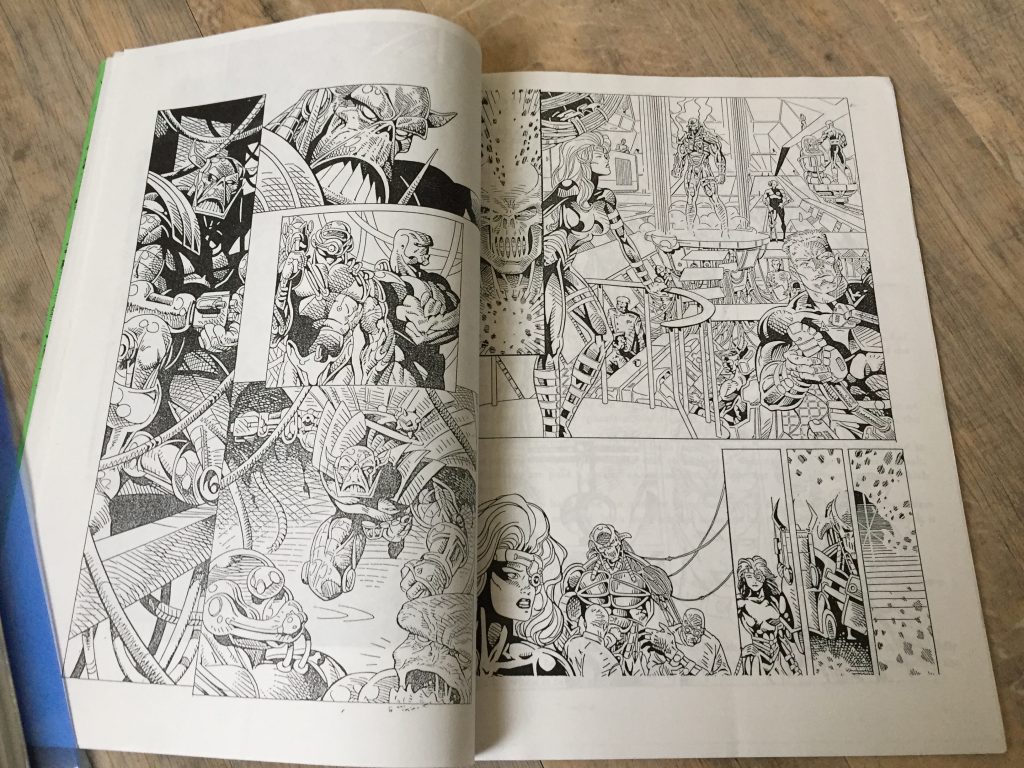
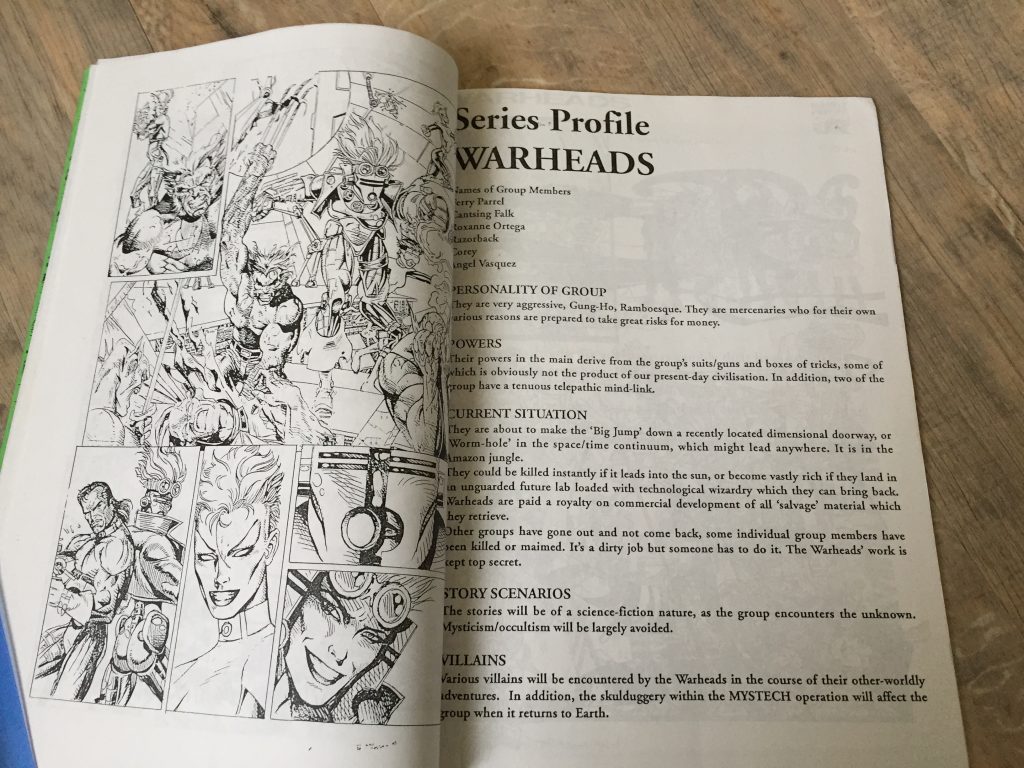
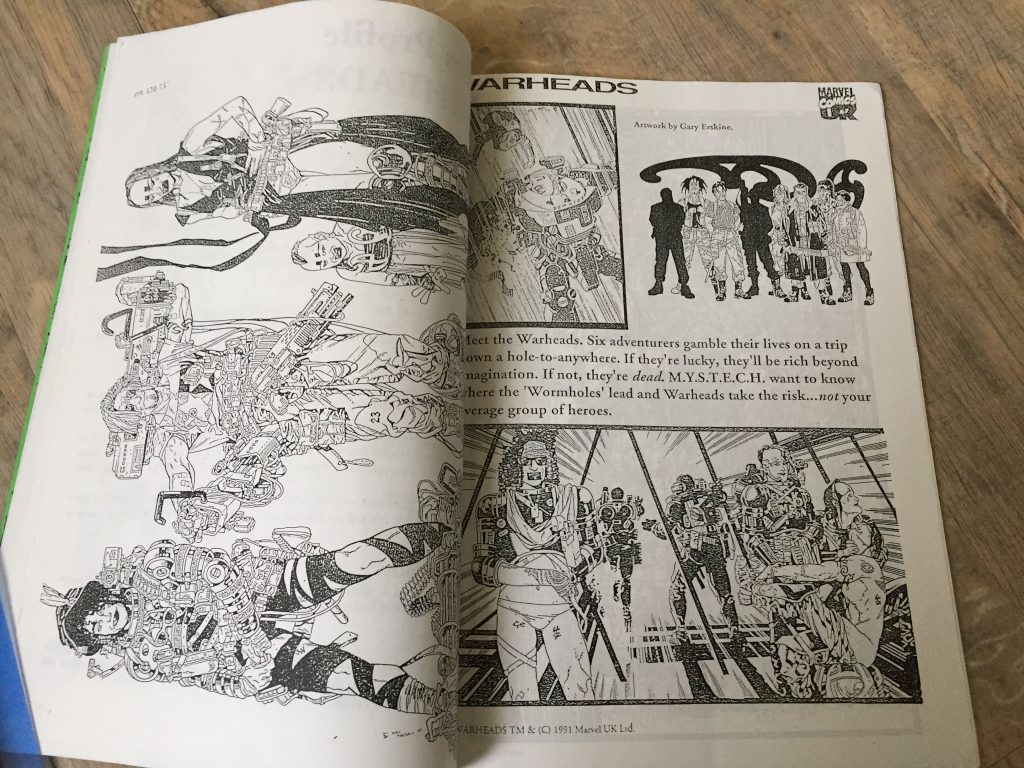
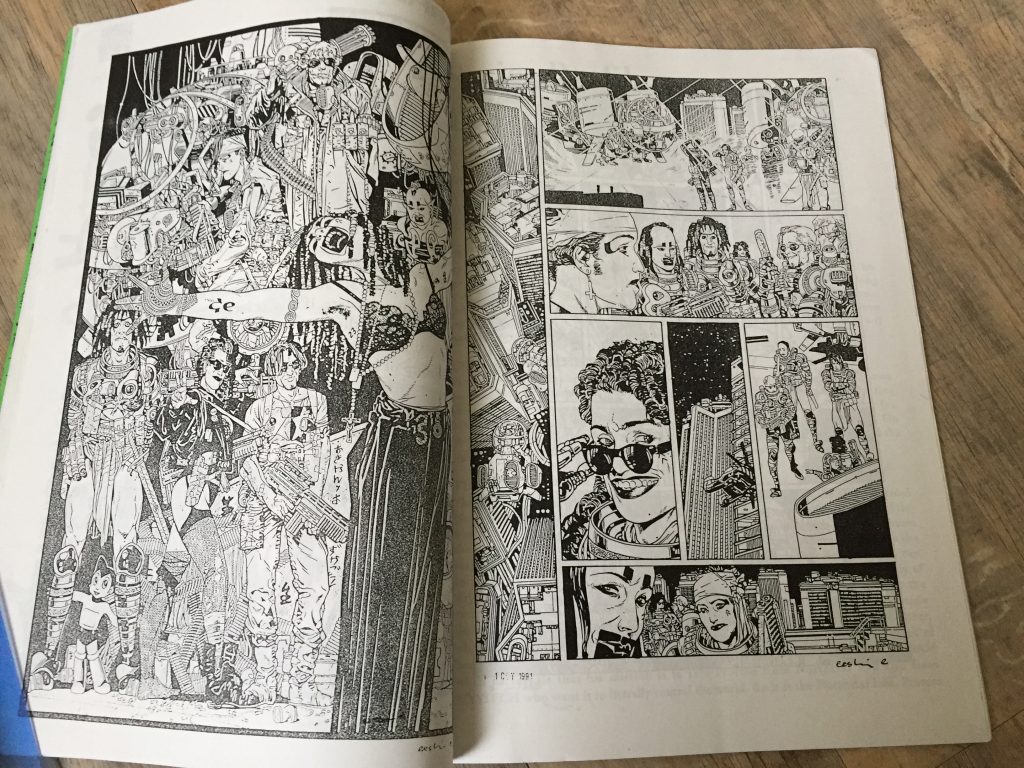
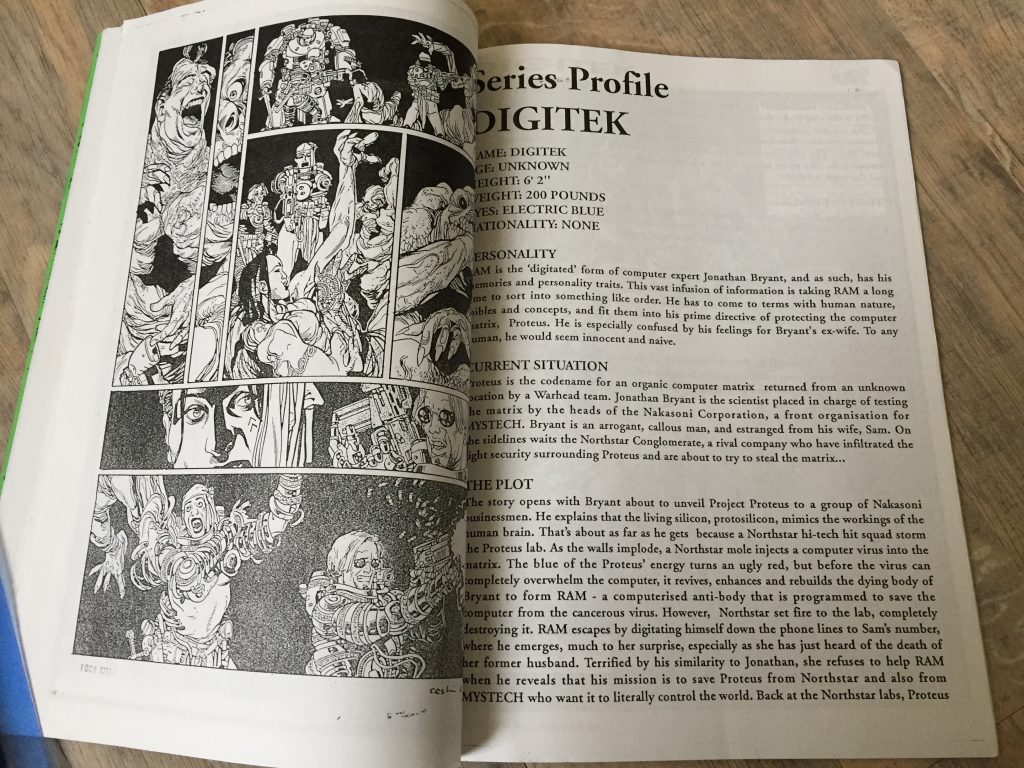
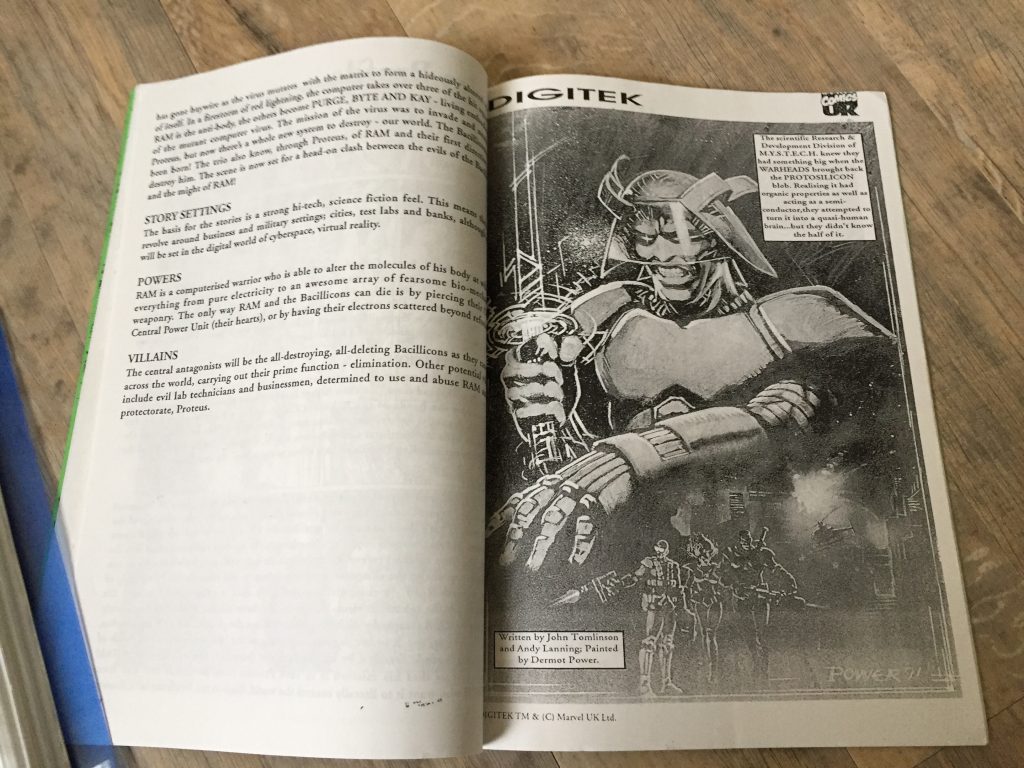
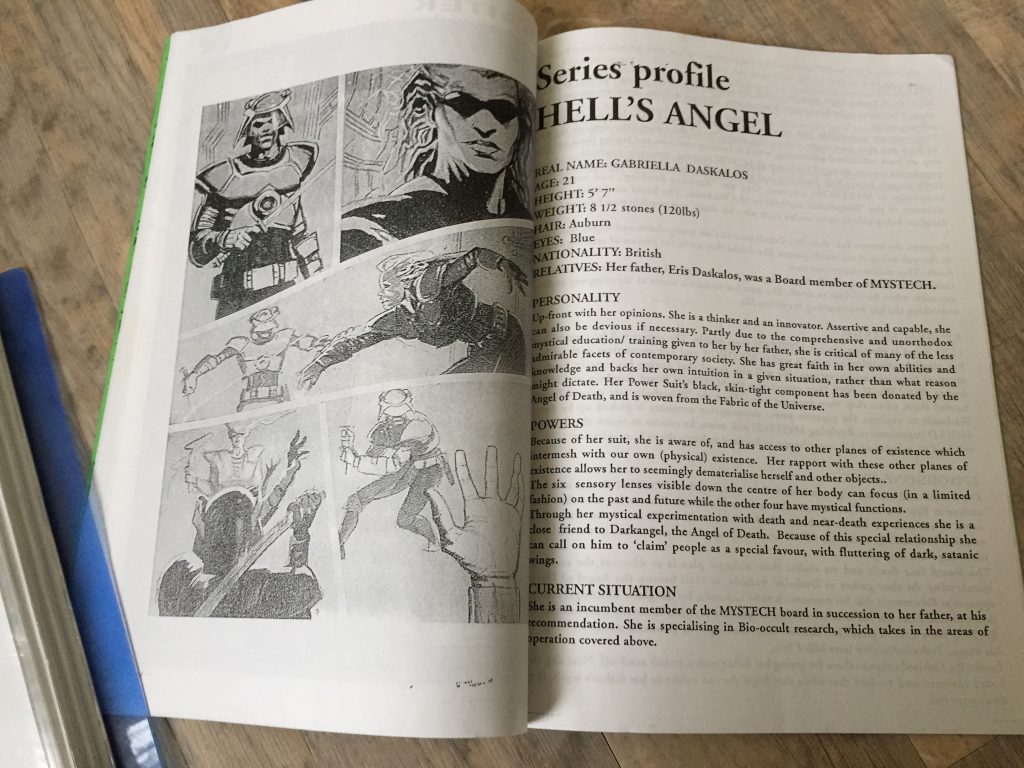
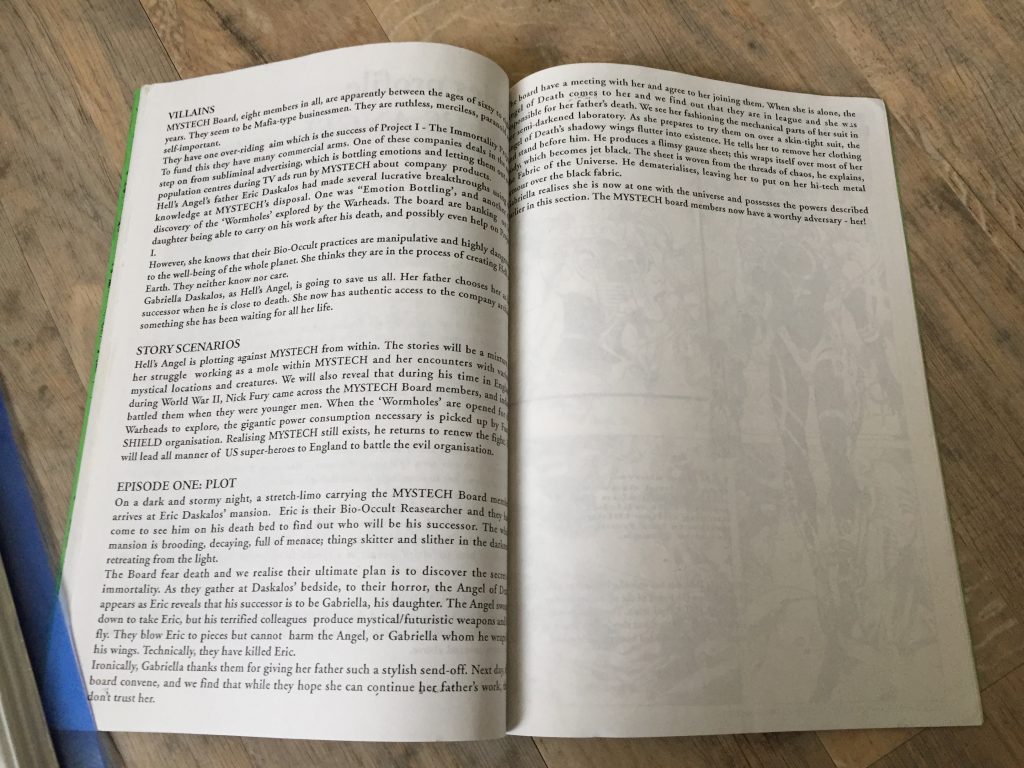
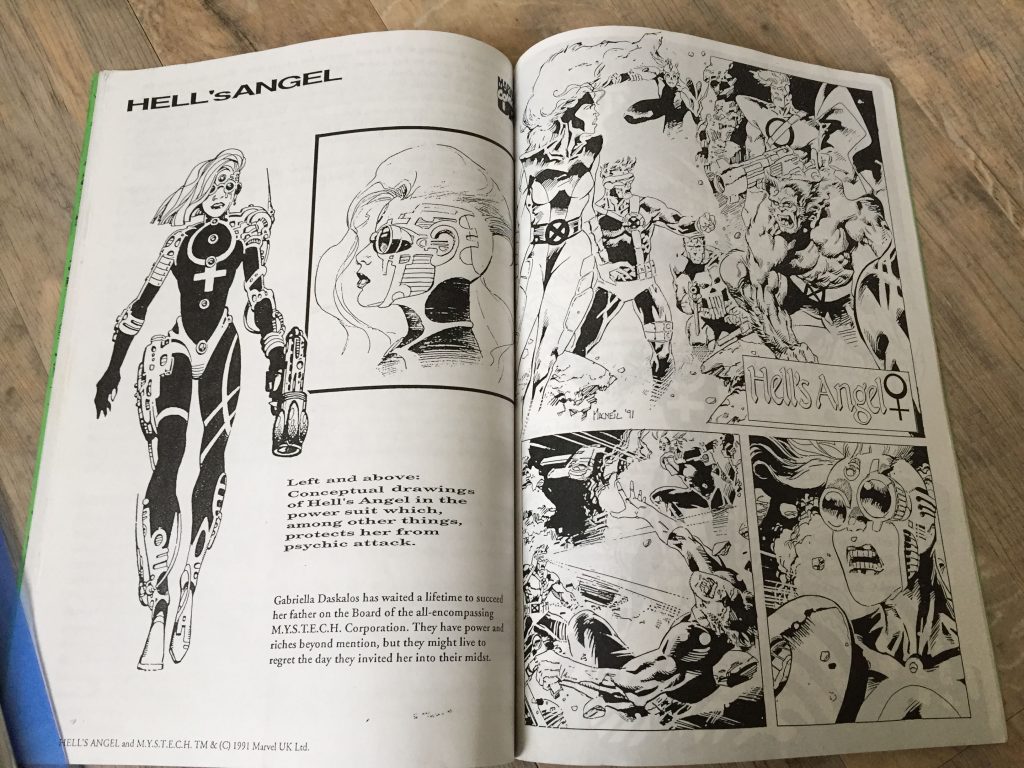
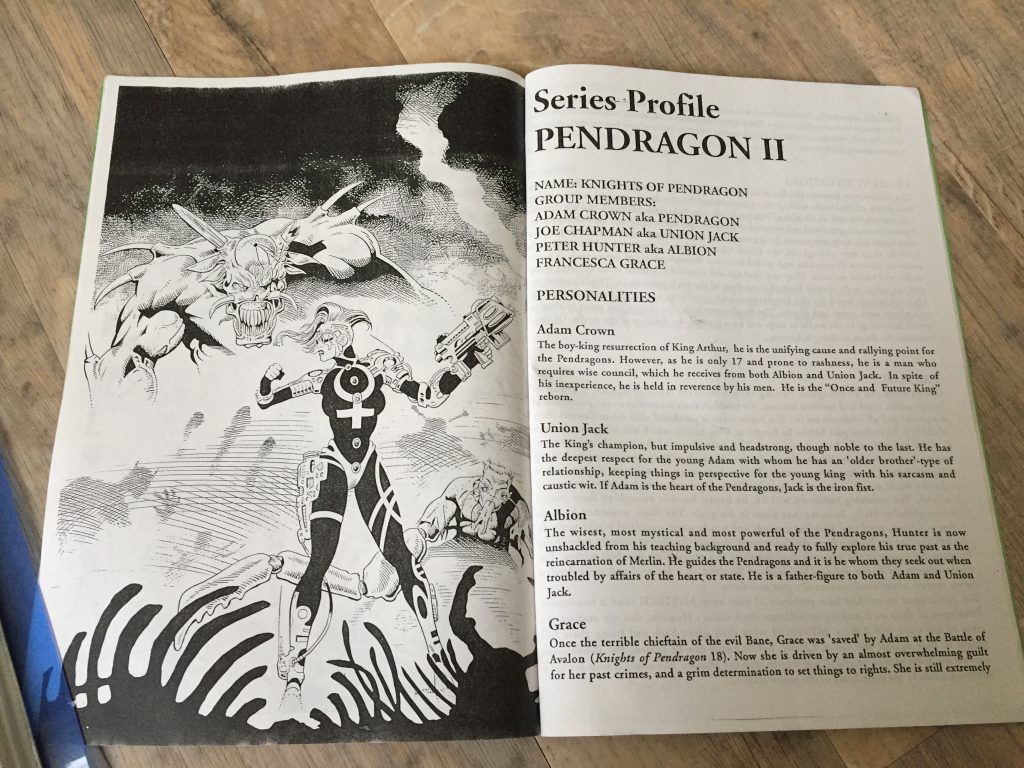
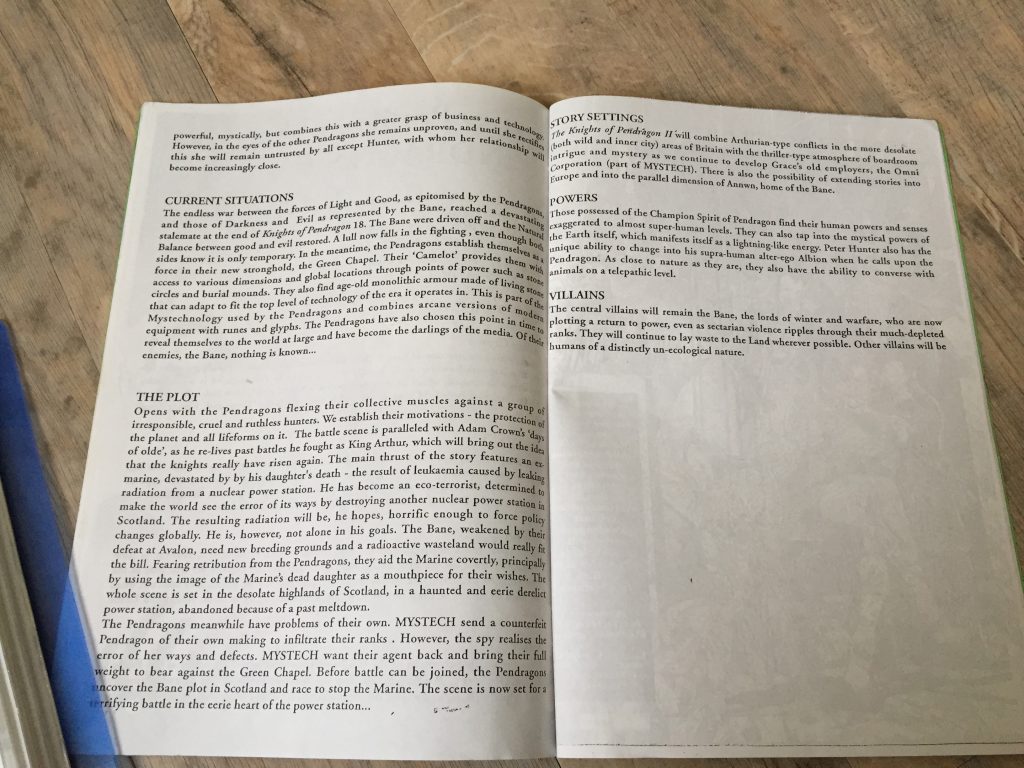
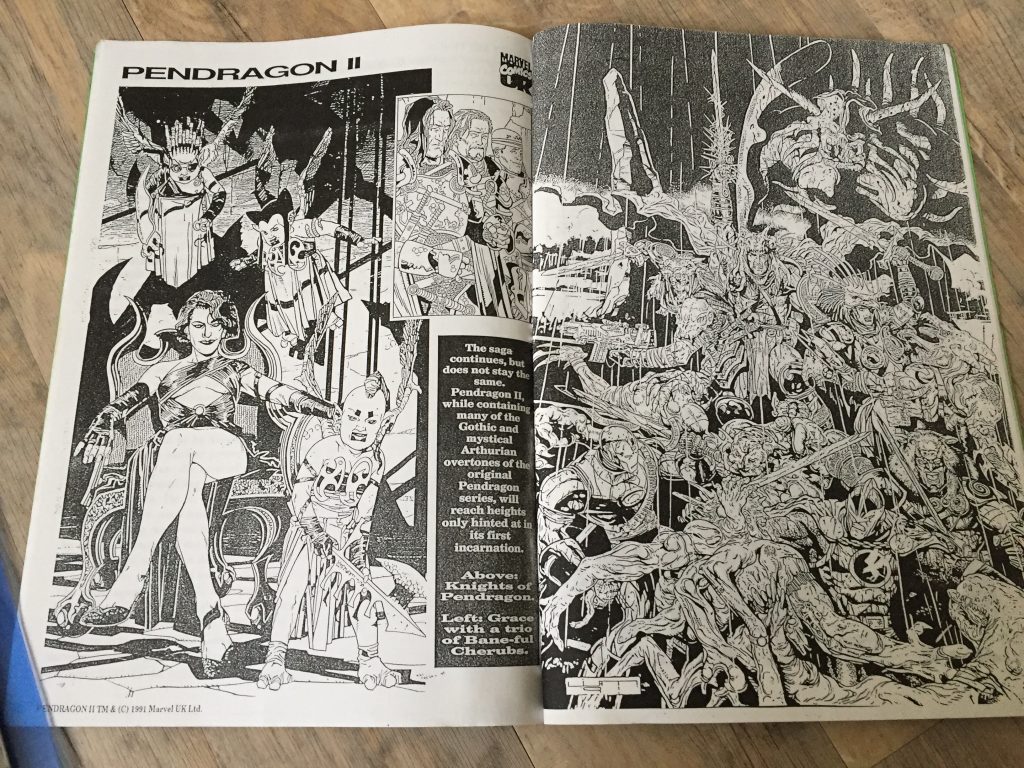
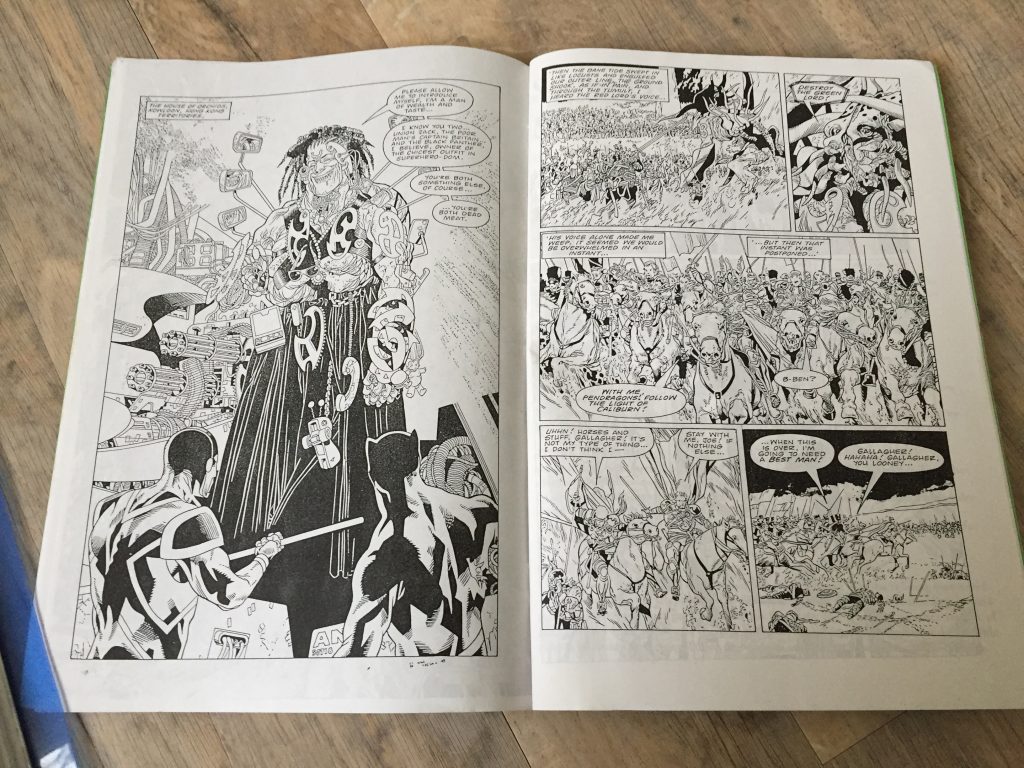
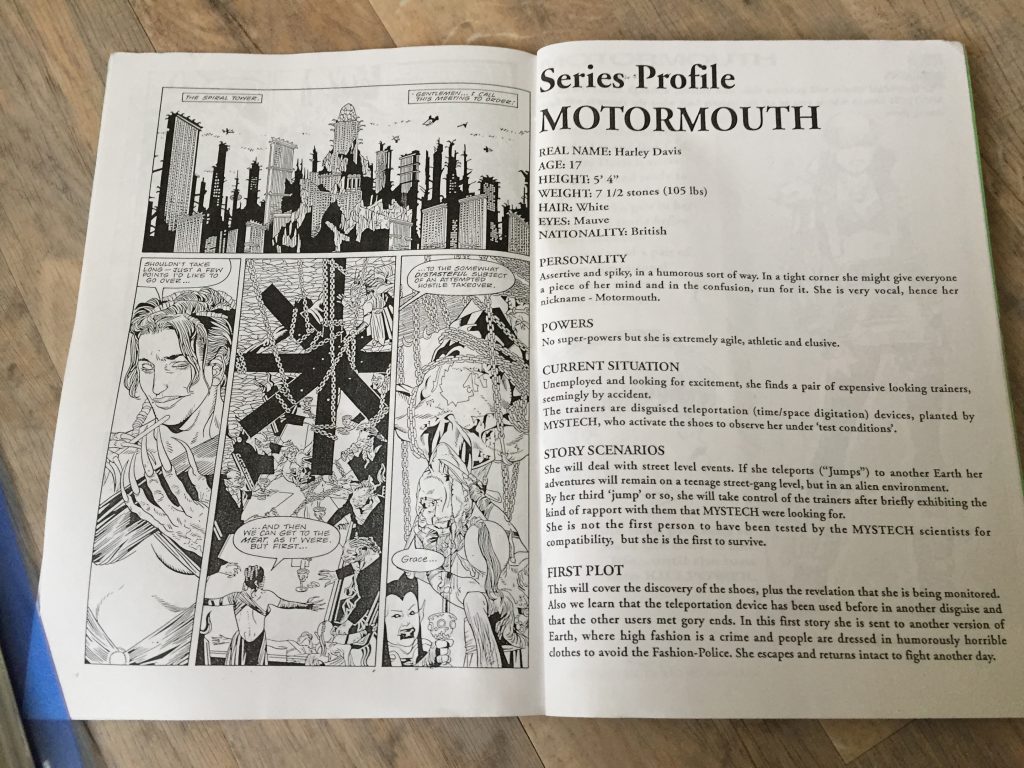
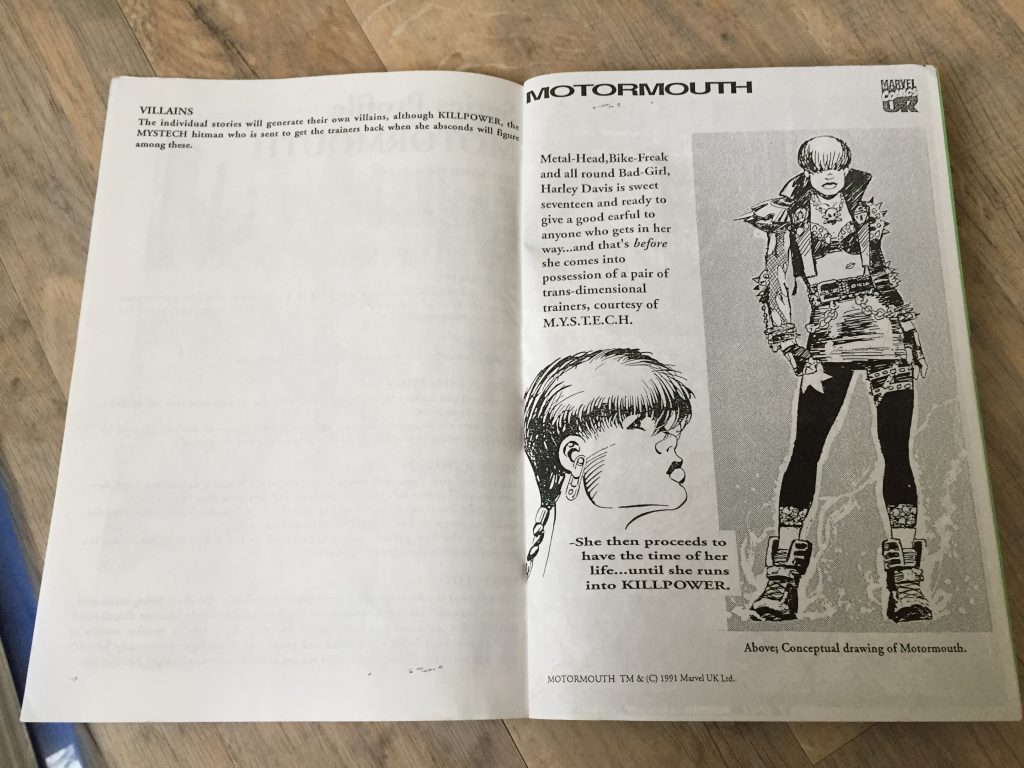
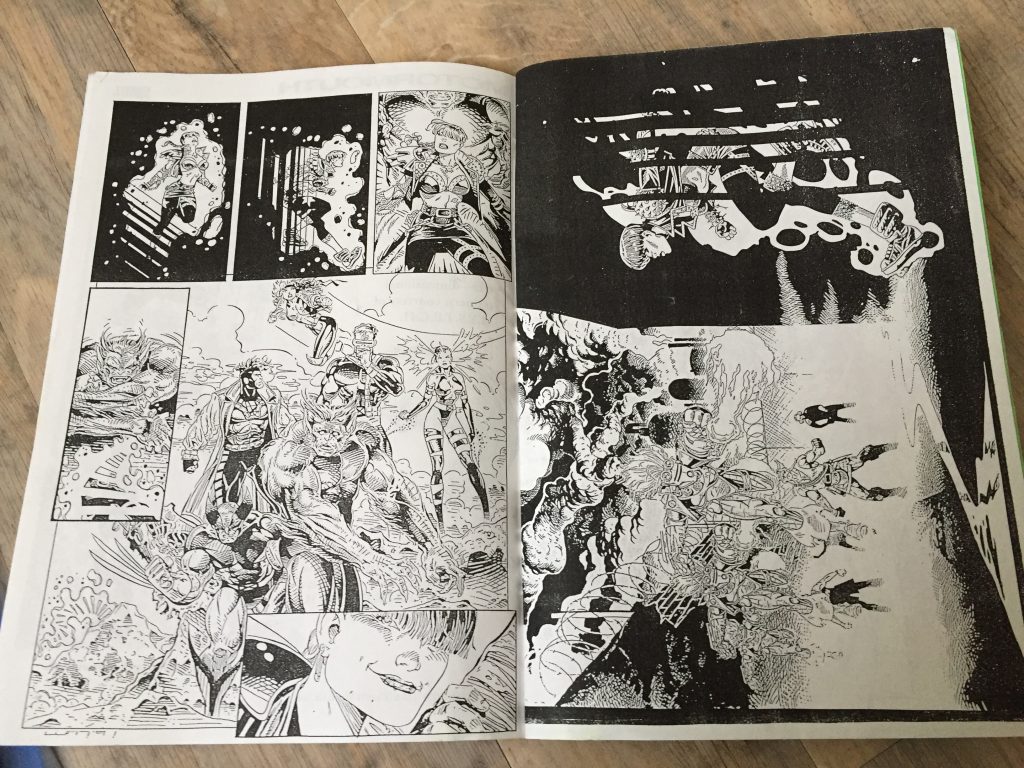
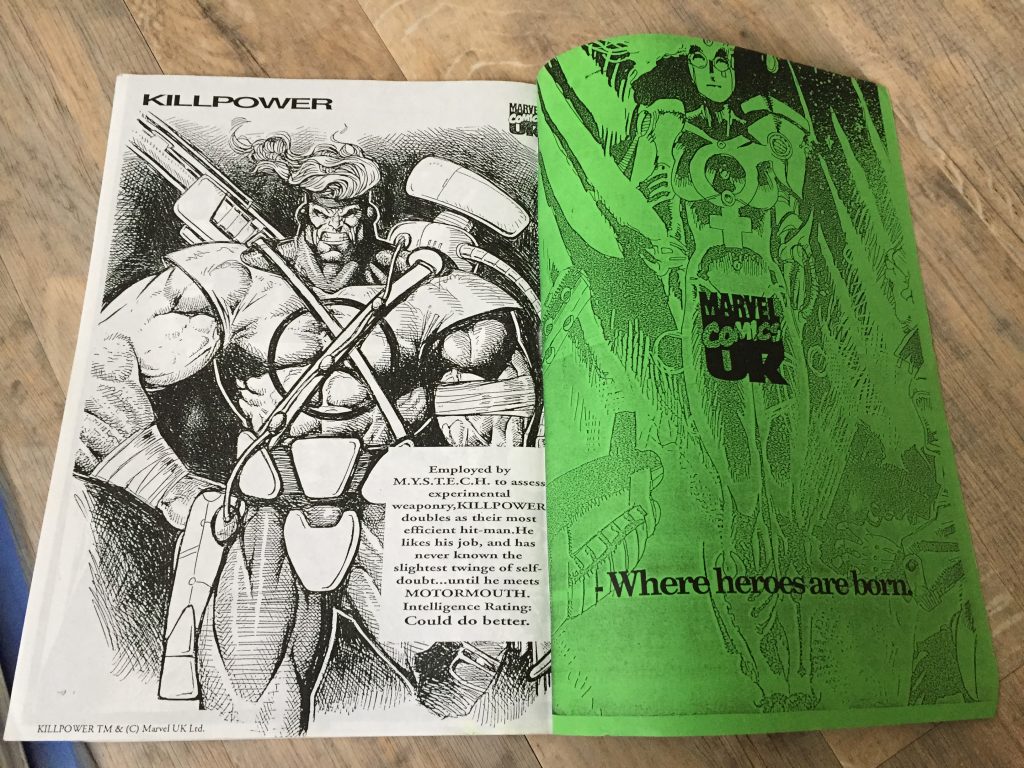
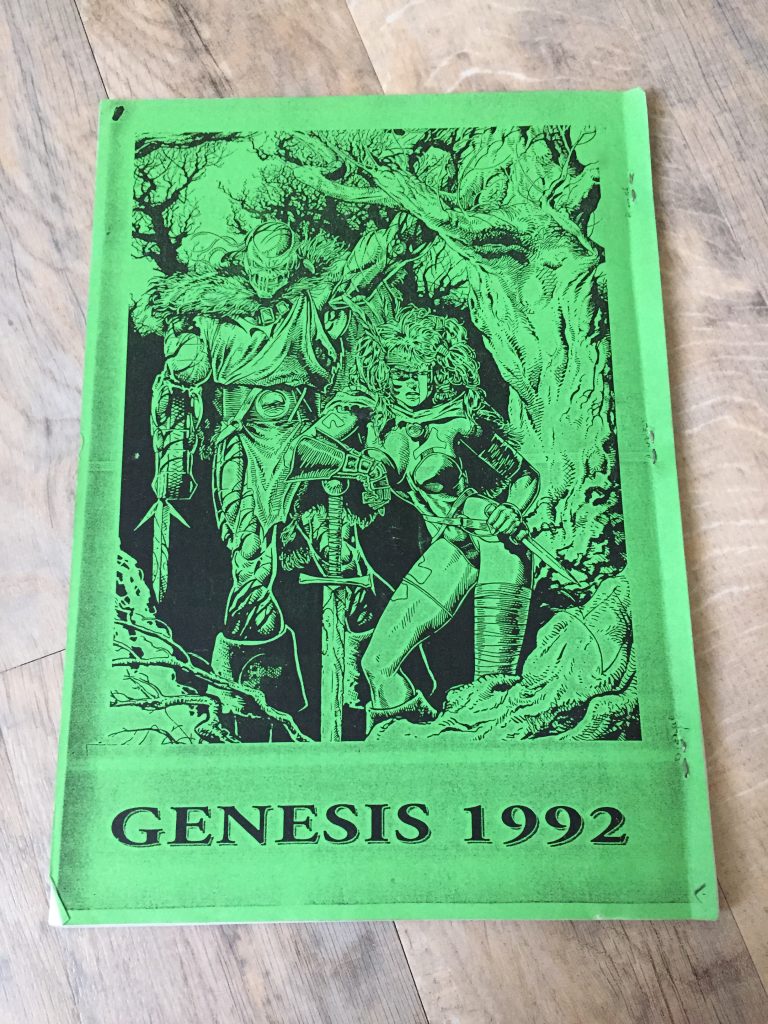
Marvel UK Genesis 1992 Booklet
With much thanks to Adrian Clarke of GetMyComics and Richard Green for the the lead on the Dark Angel story. Death’s Head II, Tuck, Dark Angel, Digitek, Motormouth, Killpower, Warheads and MYS-TECH © Marvel Comics
The founder of downthetubes, which he established in 1998. John works as a comics and magazine editor, writer, and on promotional work for the Lakes International Comic Art Festival. He is currently editor of Star Trek Explorer, published by Titan – his third tour of duty on the title originally titled Star Trek Magazine.
Working in British comics publishing since the 1980s, his credits include editor of titles such as Doctor Who Magazine, Babylon 5 Magazine, and more. He also edited the comics anthology STRIP Magazine and edited several audio comics for ROK Comics. He has also edited several comic collections, including volumes of “Charley’s War” and “Dan Dare”.
He’s the writer of “Pilgrim: Secrets and Lies” for B7 Comics; “Crucible”, a creator-owned project with 2000AD artist Smuzz; and “Death Duty” and “Skow Dogs” with Dave Hailwood.
Categories: British Comics, Creating Comics, downthetubes Comics News, downthetubes News, Features
 Crowdfunding Spotlight: Who Killed Nessie? A Quick Chat with Paul Cornell & Rachael Smith
Crowdfunding Spotlight: Who Killed Nessie? A Quick Chat with Paul Cornell & Rachael Smith  Catching up with the Comics Laureate! An interview with Bobby Joseph
Catching up with the Comics Laureate! An interview with Bobby Joseph  In Memoriam: Comic Artist, Writer, Inspiration: Paul Neary
In Memoriam: Comic Artist, Writer, Inspiration: Paul Neary  In Memoriam: Comic Artist and Writer Nick Spender
In Memoriam: Comic Artist and Writer Nick Spender